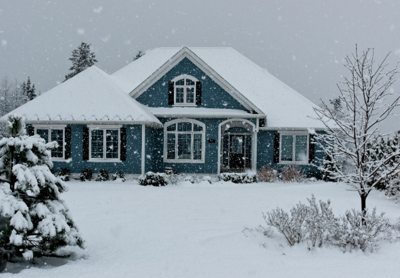
As the cold weather sets in, homes become more vulnerable to mould growth. The combination of low temperatures and high humidity creates the perfect environment for mould.
Mould can cause unsightly damage to your property but can also lead to serious health issues if not taken care of. This includes allergies and respiratory problems. To keep your home safe, it’s imperative to take preventive measures. If you don’t stay ahead of this, you may eventually need professional mould removal services.
Causes of Mould in Winter
Mould is more likely to be a problem in the winter. This is due to several things: The first cause is condensation, which is caused when warm air inside the home meets cold surfaces (windows, walls, or ceilings). This moisture, if it’s combined with poor ventilation, creates the ideal conditions for mould to grow in.
Homes that are not properly insulated or have damp areas like bathrooms and basements are particularly more prone to this issue. If left unchecked, mould can spread quickly and require extensive treatment from mould removal services, which could be costly.
Tips for Prevention
Here are a few practical steps you can start to implement immediately to stop mould growth from invading your home this winter:
Improve Ventilation: Ensuring good airflow throughout your home is one of the most effective ways to prevent mould. Open windows, even during winter, to let fresh air circulate.
Reduce Condensation: Condensation is a key contributing factor to mould, which can be reduced if you use a dehumidifier to balance out the moisture levels in your home. Also, avoid drying clothes indoors or, if needed, use a well-ventilated space.
Maintain Consistent Heating: Keeping your home at a warm temperature can help reduce condensation on walls and windows.
Even if you have these measures in place, mould can still form in areas that are hard to reach despite your efforts. In some cases, it’s best to seek advice from professional mould removal services to ensure that the problem is dealt with accordingly and safely.
Already Have Mould? Here’s What to Do
If you’ve started to notice mould in your home, the last thing you want to do is panic. However, there are several things you can do to tackle this before it spreads. You can start by cleaning the affected areas with water and a specialist mould removal product. You can also increase ventilation in these areas and rooms by opening windows and considering adding more insulation if necessary.
However, if the mould covers a large area or keeps returning, it might be worth seeking professional help. Mould removal services are trained to handle severe cases of mould infestation and can offer solutions beyond simple cleaning. They can also identify the underlying causes and recommend long-term strategies so that the mould doesn’t return.
Additional Tips for Mould Prevention
Winter is when mould can go unnoticed until it’s too late. Alongside regular ventilation and heating, there are other routines you can incorporate to make your home even more resistant to mould. For starters, regularly check high-risk areas.
There are certain areas in your home that are naturally more prone to mould, i.e. basements, bathrooms and attics. Take it upon yourself to make it a habit to inspect these areas frequently, especially after heavy rainfall or snowfall. Also, look for dampness on walls or ceilings, indicating the start of mould growth. Early detection can save you from needing extensive mould removal services.
Control Indoor Humidity Levels
Investing in a hygrometer, a device that measures humidity levels, can be helpful. The aim should be to keep indoor humidity below 60% to minimise mould. If the levels rise, you should look into using dehumidifiers or exhaust fans in bathrooms and kitchens. For added protection, you should watch your indoor plants, as they can release moisture into the air. Try to get plants that are less likely to increase indoor humidity during the colder months.
Seal & Insulate
Ensuring your home is well-insulated is one of the best things you can do to tackle mould. Make sure you check for any cracks or gaps around windows and doors. These can let in cold air, which creates moisture when it meets warm indoor temperatures. Sealing these entry points helps prevent mould and also improves energy efficiency.
Professional mould removal services can help by providing targeted solutions that can go beyond the reach of everyday cleaning. If you invest in expert advice, you’ll be on your way to safeguarding your home’s air quality.
Ultimately, mould prevention is all about staying ahead. If you take steps like improving ventilation and maintaining consistent heating, you can significantly reduce the chances of mould forming in your home. However, if mould does become an issue, make it your priority to contact mould removal services so that this is addressed properly.
If you’re proactive and have the right approach, you can keep your property safe, dry and mould-free throughout the winter.


(0) comments
We welcome your comments
Log In
Post a comment as Guest
Keep it Clean. Please avoid obscene, vulgar, lewd, racist or sexually-oriented language.
PLEASE TURN OFF YOUR CAPS LOCK.
Don't Threaten. Threats of harming another person will not be tolerated.
Be Truthful. Don't knowingly lie about anyone or anything.
Be Nice. No racism, sexism or any sort of -ism that is degrading to another person.
Be Proactive. Use the 'Report' link on each comment to let us know of abusive posts.
Share with Us. We'd love to hear eyewitness accounts, the history behind an article.